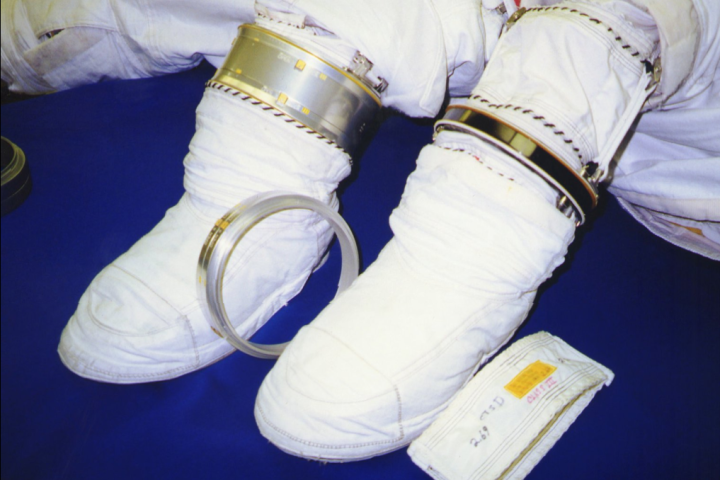
“The spacesuit is the astronaut’s vehicle and life support when outside the spacecraft or habitat,” she says. “Damage to the spacesuit can be life threatening if severe. Even small amounts of damage to the suit can affect the ability of the astronaut to perform the operational tasks that are required.”
As a result, Stirling is one of several researchers at MIT’s AeroAstro department and Charles Stark Draper Laboratory in Cambridge, Massachusetts trying to develop a technology to avoid astronaut tumbles. What they’ve come up with are a new type of space boots that feature built-in sensors and miniature haptic motors, which create vibrations to help guide wearers over or around obstacles.
“For this study, we used off-the-shelf haptic motors that were placed on the foot,” Stirling notes. “We are currently embedding these sensors in a shoe for our follow-on study. Our key outcome from the current work was understanding perception of different vibration signals so that we could create a language. By language we mean the mapping from a signal to a meaning.”
When Stirling talks about “language” she means the idea that your boot could warn you about potential obstacles when a person is unable to see their feet — one of the main causes of astronaut falls. The newly-developed space boot features motors in its toe, heel, and outer front (locations chosen after extensive studies), which pulse or vibrate at different intensities based on the obstacles being warned about.
“We are in the preliminary stages of this work and it is not flight ready,” Stirling tells Digital Trends. “Although NASA is very interested in technologies that can improve astronaut safety and performance, there are many earth applications for this technology [as well]. This technology aims to augment an astronaut’s reduced vision and reduced sense of tactile feedback. There is a direct relationship to [the] needs of those with a vision impairment or for elderly adults.”


